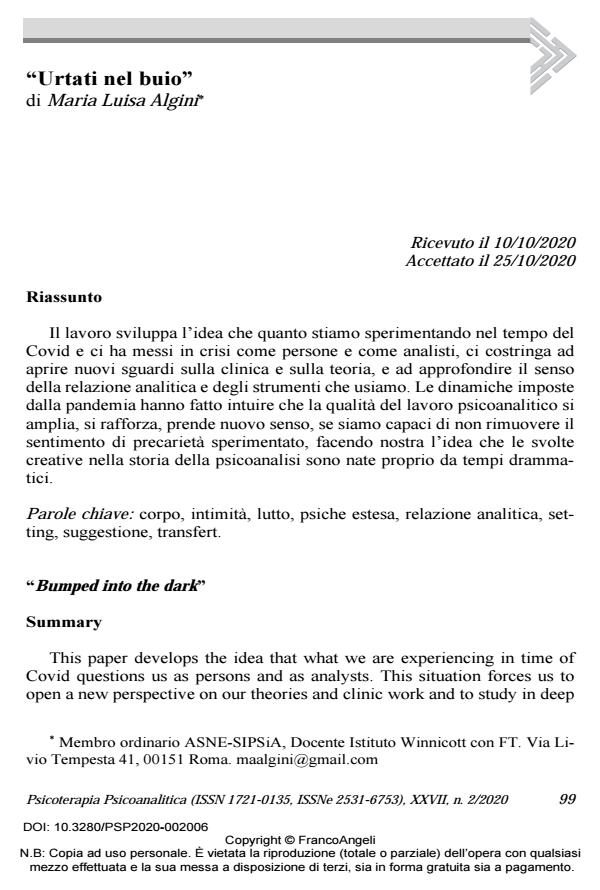"Bumped into the dark"
Journal title PSICOTERAPIA PSICOANALITICA
Author/s Maria Luisa Algini
Publishing Year 2020 Issue 2020/2
Language Italian Pages 15 P. 99-113 File size 230 KB
DOI 10.3280/PSP2020-002006
DOI is like a bar code for intellectual property: to have more infomation
click here
Below, you can see the article first page
If you want to buy this article in PDF format, you can do it, following the instructions to buy download credits

FrancoAngeli is member of Publishers International Linking Association, Inc (PILA), a not-for-profit association which run the CrossRef service enabling links to and from online scholarly content.
This paper develops the idea that what we are experiencing in time of Covid questions us as persons and as analysts. This situation forces us to open a new perspective on our theories and clinic work and to study in deep the meaning of analytic relationship and therapeutic tools. The dynamics that global pandemic imposes have hinted that the quality of psychoanalytic work expands, strengthens and takes on new meanings if we are able not to remove the feeling of precariousness now experienced, embracing the idea that the creative turning points in the history of psychoanalysis are born precisely from dramatic times.
Keywords: Body, intimacy, mourning, extended psyche, analytic rela-tionship, setting, suggestion, transference.
Maria Luisa Algini, "Urtati nel buio" in "PSICOTERAPIA PSICOANALITICA" 2/2020, pp 99-113, DOI: 10.3280/PSP2020-002006